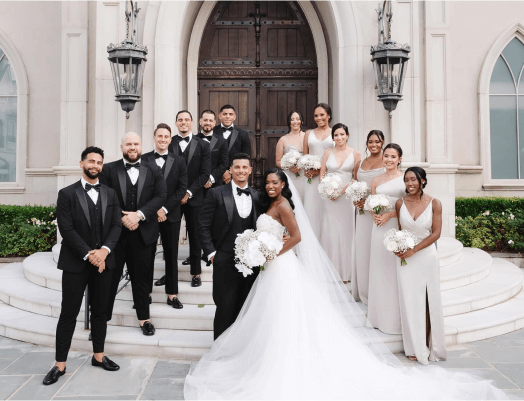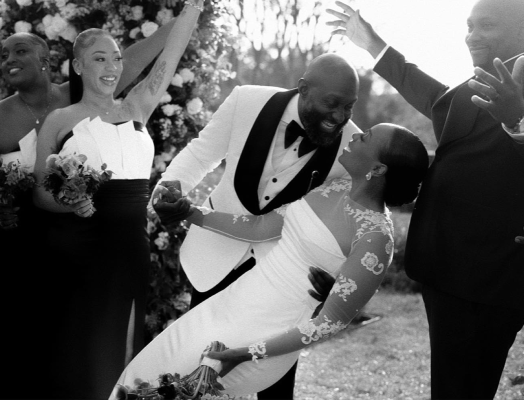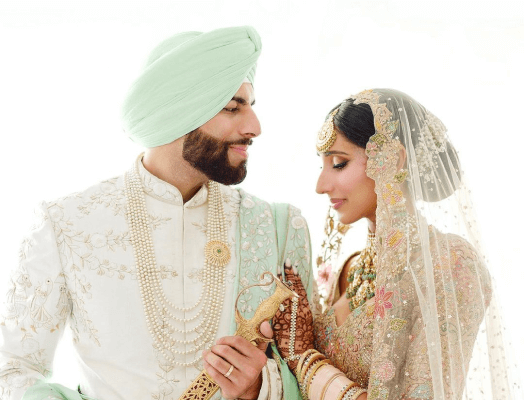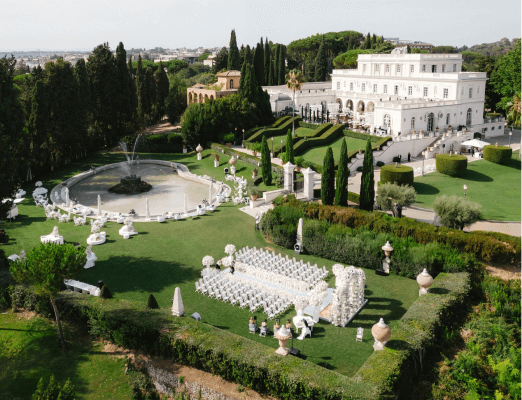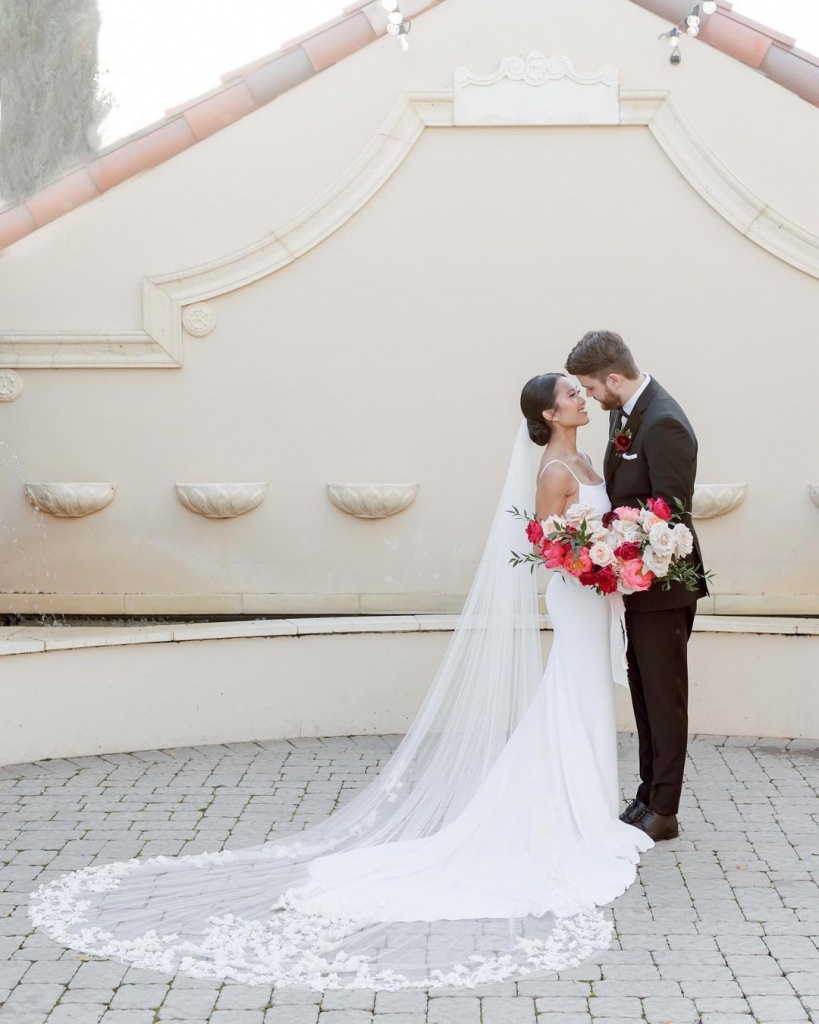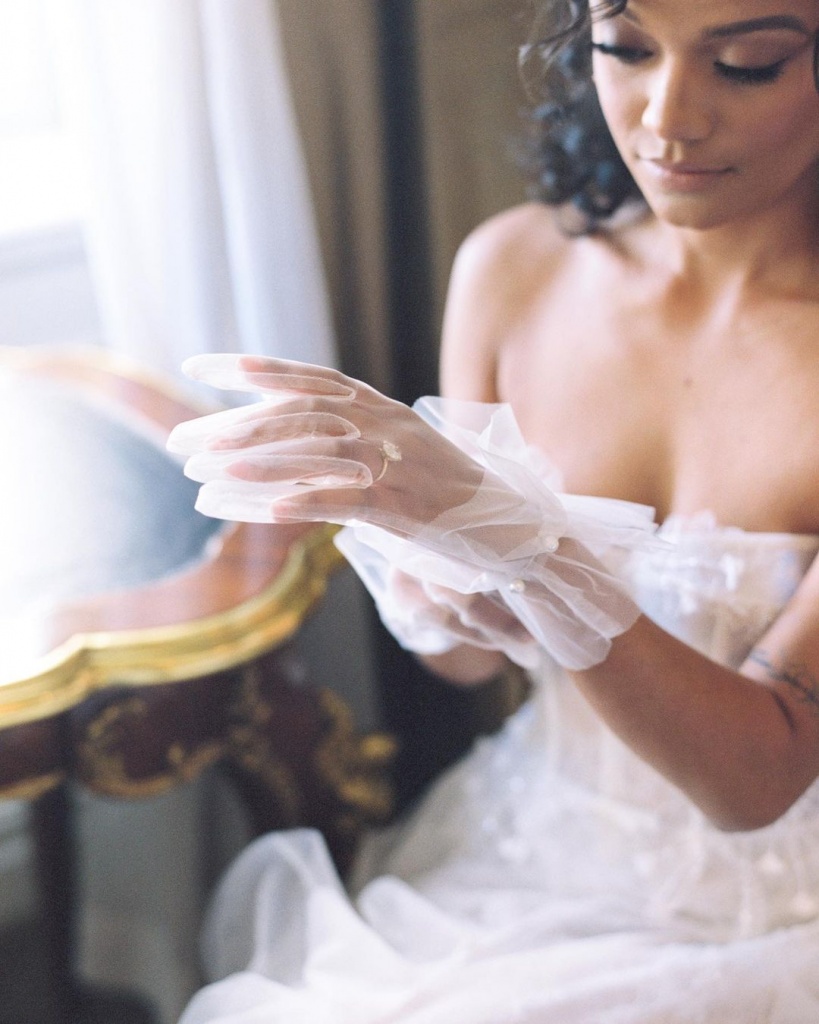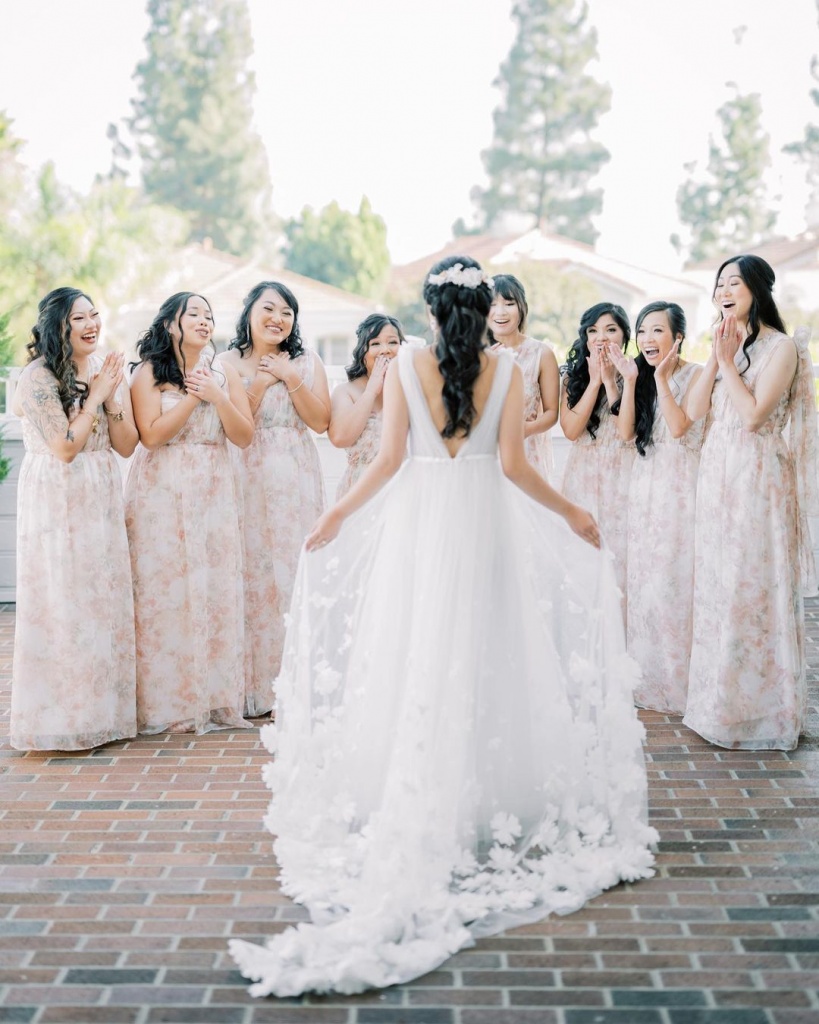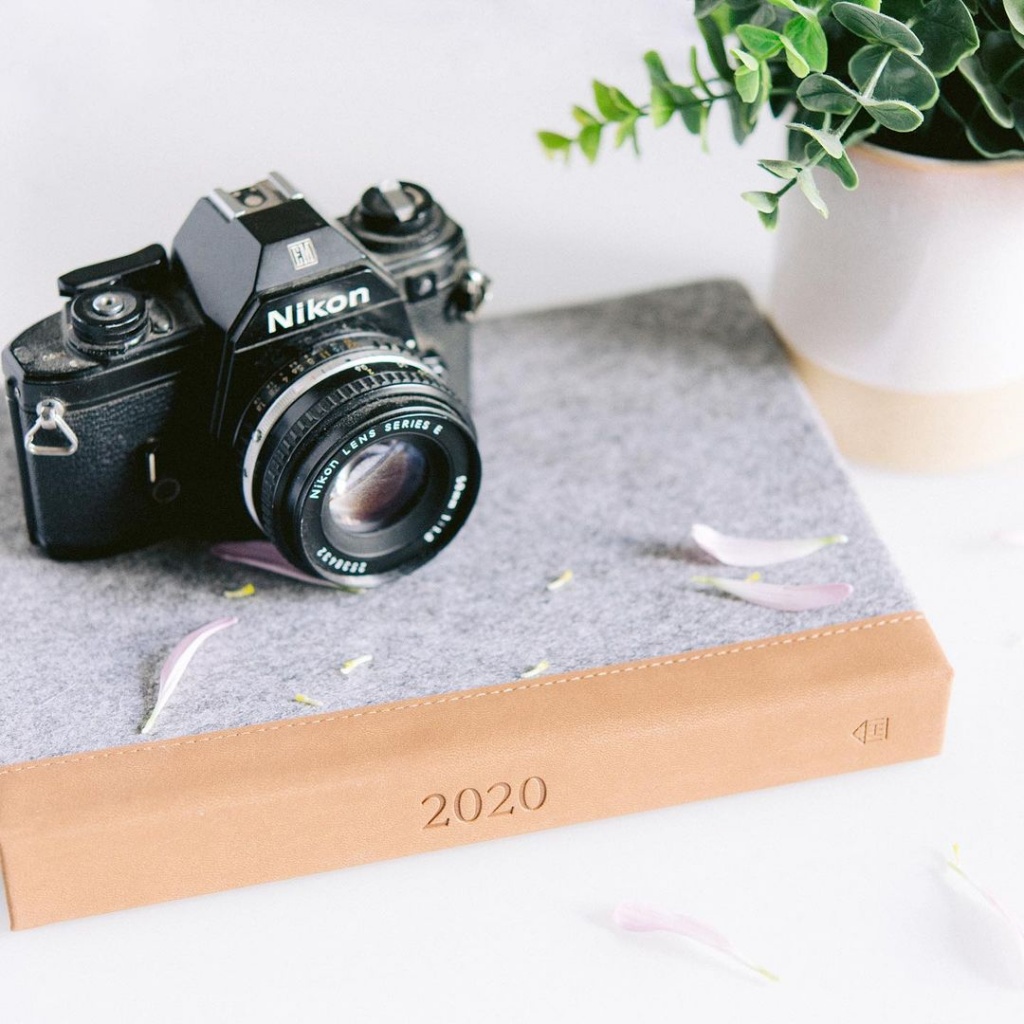Complete Wedding Photographer Outfit Guide for Men & Women
- Author: Natali Grace Levine
- Reading time: 12 min 51 sec
- Publication date: 07/11/2022
- Updated: 08/21/2025
- The Psychology Behind a Professional Wedding Photographer's Outfit
- Essential Wardrobe Principles Every Wedding Photographer Should Follow
- Male Wedding Photographer Outfit Ideas: Winning Combinations
- Female Wedding Photographer Outfit Ideas: Stylish and Functional Looks
- Color Strategy and Visual Psychology in Photography Attire
- Fabric Selection and Performance Under Pressure
- Footwear for All-Day Performance
- Photographer’s Outfit for Wedding FAQs
You know that moment when you're reviewing photos from a wedding and realize you accidentally photobombed half the ceremony because your bright red blazer kept drawing attention? Or worse – when you missed the perfect shot because your shoes were killing you and you couldn't get low enough for that dramatic angle.
Wedding photography isn't just about having the right camera gear. Your outfit plays a crucial role in how you're perceived, how well you can do your job, and whether you'll survive those grueling 12-hour wedding days. The right clothing helps you blend seamlessly into any celebration while giving you the freedom to capture every precious moment without constantly adjusting, tugging, or worrying about wardrobe malfunctions.
This isn't about following rigid fashion rules – it's about understanding how to dress strategically so you can focus on what matters most: creating stunning images that couples will treasure forever.
Find Your Perfect Wedding Vendors
The Psychology Behind a Professional Wedding Photographer's Outfit
Your clothing choices communicate volumes before you even take your first shot. When couples invest thousands in wedding photography, they want assurance that they've hired a seasoned professional who has everything under control. Your attire is often their first real-world impression of your expertise and attention to detail.
Wedding guests, vendors, and venue staff also form immediate judgments based on how you present yourself. A polished appearance opens doors – literally. Coordinators are more likely to share timeline updates, vendors offer helpful tips about lighting or logistics, and family members trust you to direct group photos when you look the part.
Beyond first impressions, your clothing affects your ability to work effectively throughout the day. You'll be climbing stairs for balcony shots, crawling under tables for reception candids, and constantly moving between different lighting conditions. Every piece you wear should support these movements rather than hinder them.
The psychology extends to your own confidence levels too. When you feel put-together and appropriately dressed, you naturally carry yourself with more authority. This confidence translates into better client interactions, smoother vendor relationships, and ultimately, stronger images because you're focused on creativity rather than self-consciousness.


Essential Wardrobe Principles Every Wedding Photographer Should Follow
Understanding the fundamental principles of a photographer's wedding outfit will guide every clothing decision you make. These aren't arbitrary fashion rules – they're practical guidelines developed by photographers who've learned through experience what works and what doesn't.
Comfort Over Everything Else
Wedding photography is an endurance sport disguised as an art form. You'll spend hours on your feet, often in uncomfortable positions, while carrying heavy equipment. Your clothing needs to move with you, not against you. Fabrics should breathe, fits should allow full range of motion, and shoes absolutely must be broken in before any wedding day.


The Art of Strategic Invisibility
Your goal is professional visibility without visual distraction. Couples should notice your expertise and professionalism, not your outfit choices. This means avoiding anything that draws the eye – busy patterns, bright colors, statement jewelry, or anything that might photograph poorly when you inevitably appear in background shots.


Weather Preparedness
Outdoor ceremonies, reception venues with aggressive air conditioning, unexpected rain showers, and scorching summer heat all require different strategies. Build your wardrobe with layering options and always have backup plans for extreme weather conditions.


Movement and Equipment Compatibility
Your camera strap needs to sit comfortably across your chosen outfit without causing fabric bunching or creating unflattering lines. Pockets should be functional for small accessories like lens cleaning cloths or backup memory cards. Sleeves shouldn't catch on equipment, and necklines shouldn't gape when you bend forward for low-angle shots.


Male Wedding Photographer Outfit Ideas: Winning Combinations
Men often assume wedding photography attire is straightforward, but there's actually significant nuance in choosing outfits that photograph well while providing maximum functionality. Your clothing should strike the right balance between approachable professionalism and polished expertise.








Formal and Black-Tie Wedding Options:
- Charcoal wool suit with white dress shirt, navy silk tie, and black leather oxfords. Add a matching pocket square for extra polish. This combination photographs beautifully and commands respect in upscale venues.
- Black slim-fit suit with crisp white shirt, no tie, and sleek black loafers. Keep the top two buttons undone for a contemporary edge that still feels formal enough for elegant affairs.
- Navy blue suit with light blue dress shirt, burgundy tie with subtle pattern, and brown leather dress shoes. This combination adds warmth while maintaining sophisticated appeal.
Semi-Formal and Cocktail Wedding Styles:
- Dark wash dress jeans with navy blazer, white button-down shirt (untucked), and brown leather loafers. Perfect for garden parties or vineyard weddings where formal might feel overdressed.
- Khaki chinos with light gray cardigan over white henley, finished with white leather sneakers. This works particularly well for outdoor or destination weddings.
- Charcoal dress pants with blue chambray shirt, navy knit blazer, and dark brown boat shoes. Easy to layer up or down depending on venue temperature.
Casual and Outdoor Wedding Ensembles:
- Dark denim with white linen button-down, brown leather belt, and canvas sneakers. Roll up sleeves for beach ceremonies or keep them down for air-conditioned reception venues.
- Olive green chinos with cream-colored polo, lightweight tan jacket, and hiking-inspired leather shoes with good grip for uneven terrain.
- Light gray linen pants with white short-sleeve button-down, brown leather loafers without socks, and a panama hat for sun protection during outdoor ceremonies.
Weather-Adaptive Combinations:
- Base layer of white t-shirt, add gray sweater, top with navy blazer that can be removed as needed. Pair with dark jeans and versatile sneakers that work for both casual and semi-formal settings.
- Water-resistant dark pants with moisture-wicking polo, waterproof jacket that packs small, and shoes with excellent grip for potentially slippery surfaces.
- Lightweight cotton shorts (knee-length only) with breathable linen shirt, comfortable walking sandals with closed toes, and a wide-brimmed hat for sun protection.
Season-Specific Styles:
- Spring/Summer: Medium-wash jeans with light sweater in soft blue or green, comfortable walking shoes, and a jacket that transitions from cool morning to warm afternoon.
- Fall: Corduroy pants in rich brown with cream cable-knit sweater, leather boots with good tread, and a wool coat for outdoor ceremonies in changing weather.
- Winter: Thermal underlayers beneath dress pants and sweater, insulated but quiet shoes with excellent grip, and a high-quality coat that photographs well but provides serious warmth.
Female Wedding Photographer Outfit Ideas: Stylish and Functional Looks
Women have more options when it comes to wedding photography attire, but this variety can make decision-making more complex. The key is choosing pieces that enhance your professional image while providing the functionality needed for long, physically demanding days.










Elegant Dress Options for Formal Occasions:
- Black wrap dress in mid-weight jersey fabric, nude or black tights, block-heel pumps in black leather, and a structured blazer that can be removed for dancing shots. This combination photographs beautifully and transitions from ceremony to reception seamlessly.
- Navy midi dress with three-quarter sleeves, minimal jewelry, nude block heels, and a leather crossbody bag that stays out of your way while shooting. The darker color hides potential stains while the cut allows full movement.
- Charcoal sheath dress with cardigan in complementary gray, comfortable wedge heels, and a belt that defines your waist while providing a place to clip small accessories.
Jumpsuit and Romper Combinations:
- Black tailored jumpsuit with wide legs for easy movement, comfortable flats with good arch support, and statement earrings as your only jewelry. Jumpsuits eliminate concerns about skirts riding up during low-angle shots.
- Navy blue jumpsuit with subtle pinstripes, white sneakers for comfort during long days, and a blazer that elevates the look for formal moments while being easy to remove when you need maximum mobility.
- Olive green wide-leg jumpsuit in breathable fabric, brown leather sandals with ankle support, and a denim jacket for layering options throughout the day.
Separates for Mix-and-Match Flexibility:
- Dark wash straight-leg jeans with white button-down shirt (French-tucked), black blazer, and pointed-toe flats. This combination looks polished while providing the comfort and durability of denim.
- Black wide-leg trousers with silk blouse in soft gray, black loafers with cushioned insoles, and a structured handbag that doubles as emergency supply storage.
- A-line midi skirt in dark fabric with fitted long-sleeve top, tights for coverage when kneeling, and comfortable boots with low heels that work for both indoor and outdoor venues.
Weather-Conscious Ensembles:
- Base of fitted dress, add tights and boots for warmth, top with cardigan and scarf that can be removed as temperatures change throughout the day.
- Lightweight maxi dress in breathable fabric, sandals with good arch support, sun hat that won't blow off in wind, and a lightweight cardigan for overly air-conditioned venues.
- Thermal underlayers beneath wool dress, insulated but quiet boots with excellent grip, warm coat that still looks professional, and accessories like gloves that can be quickly removed for shooting.
Creative and Trendy Options:
- Culottes in dark fabric with fitted turtleneck, ankle boots with minimal heel, and a blazer with interesting details that still photograph as solid colors from a distance.
- Flowing midi dress in muted earth tones, comfortable sandals with ankle straps for security, and minimal jewelry that won't catch on camera equipment or create noise during quiet moments.
- Black leather pants (or faux leather) with silk tank top, comfortable sneakers in coordinating colors, and a moto jacket that can be removed for warmer parts of the day or more formal moments.

Color Strategy and Visual Psychology in Photography Attire
Understanding color psychology helps you make strategic choices that enhance rather than detract from your professional image. Neutral colors communicate reliability and sophistication, while certain colors can either help you blend seamlessly into various wedding settings or accidentally make you the focal point when you should be invisible.


The Science of Neutral Tones
Neutral colors work because they don't compete with the wedding's color palette, whatever it might be. Black, navy, charcoal, beige, and soft grays photograph beautifully in any lighting condition and won't clash with venue decor or bridal party colors. These shades also tend to be more forgiving when it comes to stains, sweat, or other inevitable consequences of long wedding days.
Warm neutrals like cream, taupe, and soft brown work particularly well for outdoor weddings, while cooler neutrals like gray and navy excel in formal indoor settings. The key is choosing neutrals that complement your skin tone while maintaining professional appearance.
Colors That Command Respect
Deep, rich colors can work when used strategically. Forest green, burgundy, and deep purple all convey professionalism while adding subtle visual interest. These colors work particularly well in fall and winter weddings where they complement seasonal palettes.
Muted versions of traditionally bright colors can also be effective. Dusty blue, sage green, and soft lavender read as professional while adding just enough color to keep you from looking too severe or formal.


Dangerous Color Territory
Certain colors should be avoided entirely in wedding photography contexts. White and ivory are obvious no-nos since they compete with bridal attire. Bright red draws too much attention and can be distracting in photos. Neon or fluorescent colors will make you stand out in every background shot, and yellow can be particularly unflattering in mixed lighting conditions.
Avoid colors that have strong cultural or religious associations unless you're certain they're appropriate for the specific wedding you're shooting. When in doubt, stick with safe neutrals that won't accidentally cause offense or distraction.
Seasonal Color Considerations
Different seasons call for different color strategies. Spring weddings pair well with soft, muted tones that complement fresh flowers and lighter fabrics. Summer calls for colors that won't show heat-related issues – darker colors hide sweat but can be uncomfortably warm, while lighter colors are cooler but less forgiving.
Fall weddings allow for richer, deeper tones that complement changing leaves and harvest themes. Winter weddings often call for sophisticated darker colors that photograph well against snow or indoor holiday decorations.


Fabric Selection and Performance Under Pressure
The fabric you choose can make or break your wedding photography experience. Beautiful outfits mean nothing if the materials can't handle the physical demands of your job or the unpredictable conditions you'll encounter throughout the day.
Wedding photography requires fabrics that perform under pressure – literally. You'll be stretching, bending, climbing, and moving constantly, often in challenging weather conditions. Your fabric choices need to support these movements while maintaining a professional appearance from morning preparations through late-night reception dancing.
Performance Fabrics That Look Professional
Modern fabric technology offers numerous options that combine professional appearance with athletic performance. Ponte knits look like traditional suiting but stretch with your movements. Moisture-wicking blends keep you comfortable during hot outdoor ceremonies while maintaining crisp appearance.
Technical fabrics with wrinkle-resistant properties save precious time during busy wedding schedules. You won't have time to iron between ceremony and reception, so choosing fabrics that bounce back from being compressed in your camera bag or car is crucial.
Natural Fibers That Work Hard
Cotton blends offer breathability and comfort while maintaining professional appearance. Look for cotton with small percentages of elastane or spandex for stretch. Wool blends work excellently for cooler weather and have natural odor-resistant properties that help during long days.


Linen can work for casual outdoor weddings but requires careful selection since it wrinkles easily. If you choose linen, opt for linen blends that maintain the breathable properties while reducing wrinkle concerns.
Fabrics to Avoid in Wedding Contexts
Certain fabrics create more problems than they solve in wedding photography contexts. Pure silk shows water spots and sweat stains easily, making it impractical for long outdoor ceremonies. Delicate fabrics like chiffon or organza can snag on equipment or venue elements.
Fabrics that require special care or dry cleaning should be avoided since you'll likely need to wash your wedding attire frequently. Anything that wrinkles severely or shows every fingerprint will create additional stress during already challenging days.
Footwear for All-Day Performance
Your shoe choice might be the most critical element of your entire wedding photography wardrobe. Poor footwear decisions will affect every aspect of your performance – from your ability to capture spontaneous moments to your energy levels during evening receptions. You'll be walking on grass, dance floors, concrete, carpet, and potentially sand or gravel, often within the same event. Your shoes need to handle all these surfaces while keeping your feet comfortable enough to focus on photography rather than pain.
The Science of Comfortable Professional Footwear
Modern shoe technology offers options that were unimaginable even a few years ago. Memory foam insoles, arch support systems, and cushioned midsoles can now be found in shoes that look traditionally professional. Athletic shoe companies have also expanded into more formal-looking options that maintain their performance technology.
Heel height becomes crucial for photographers who spend hours on their feet. Even an extra inch of heel height significantly increases fatigue and reduces stability when you need to move quickly or get into unusual positions for shots.
Surface-Specific Shoes
Different wedding venues require different footwear approaches. Beach weddings call for shoes that won't sink in sand but still look appropriate with your outfit. Garden parties require shoes with enough grip to handle potentially wet grass without looking too casual.
Indoor venues with polished floors need shoes with appropriate traction to prevent slipping while moving quickly to capture spontaneous moments. Reception venues with dancing require shoes quiet enough that you won't be heard moving around the dance floor during important moments.
Weather-Adaptive Footwear Solutions
Rain, snow, mud, and extreme heat all present unique challenges for wedding photography footwear. Waterproof options that still look professional can save entire shooting experiences when weather doesn't cooperate with venue plans.
Breathable materials become crucial for summer outdoor weddings, while insulation without bulk is key for winter celebrations. Having seasonal footwear options allows you to be prepared for any conditions while maintaining professional appearance.
Emergency Footwear Protocols
Always carry backup footwear options, especially for destination weddings or outdoor events where conditions might change unexpectedly. Foldable flats, waterproof shoe covers, or even backup identical shoes can prevent foot problems from ruining your ability to capture important moments.
Consider the logistics of changing shoes during weddings if conditions require it. Some photographers keep backup shoes in their car or with other emergency supplies, switching between ceremony and reception if venues have dramatically different requirements.

Photographer’s Outfit for Wedding FAQs
Whether you're just starting your wedding photography journey or looking to refine your wardrobe strategy, these commonly asked questions address the practical concerns that photographers face when building their professional wardrobe.


What accessories should I wear as a wedding photographer?
Keep accessories minimal and functional. Choose simple jewelry like stud earrings, a classic watch, and wedding rings – avoid dangling pieces that create noise or catch on equipment. For storage, opt for a small crossbody bag in neutral colors or utilize clothing with functional pockets. Sun protection accessories like wide-brimmed hats work well for outdoor ceremonies, just ensure they don't interfere with your camera viewfinder. Hair accessories should be professional and secure – use hair ties that match your hair color and bobby pins to manage flyaways without creating visual distraction.
What should I pack in my wedding photography emergency kit?
Your emergency kit should address the most common wardrobe issues: stain removal pens for spills, safety pins for broken straps or gaps, clear nail polish to stop runs in tights, small scissors for loose threads, double-sided fashion tape for shifting clothing, and band-aids for blisters. Include breath mints for close client interactions and pain relievers for headaches. For weather emergencies, pack waterproof outer layers that fold small, extra layers for temperature drops, and backup shoes appropriate for different surfaces.
Should I have backup outfits for weddings?
Yes, especially for destination weddings where replacement shopping isn't possible. Focus on backing up your most vulnerable pieces – white shirts that stain easily, shoes that might fail in wet conditions, or delicate fabrics that could tear. Keep complete backup outfits in your car or with emergency equipment. For multi-day celebrations, pack coordinating pieces that work as complete alternatives if major wardrobe failures occur.
How do I adapt my wardrobe for different seasons?
Spring requires layering options for unpredictable weather and waterproof footwear for potential dew or rain. Summer calls for breathable fabrics, moisture-wicking materials, and sun protection accessories. Fall allows richer colors like burgundy and forest green, plus layering with sweaters and light jackets. Winter demands thermal layering systems, insulated waterproof footwear with good traction, and outer layers that protect from elements while maintaining professional appearance.
How do I handle venue-specific clothing requirements?
Research venue requirements in advance, but prepare for surprises. Religious venues might require modest coverage – keep scarves or cardigans for conservative dress codes. Historic venues sometimes restrict high heels that could damage floors – have flat alternatives available. Beach ceremonies often need different shoes for sand versus reception venues. Some photographers keep venue-appropriate accessories like shoe covers, modest cover-ups, or backup shoes in their emergency kit.
What's the best way to manage my hair during long wedding days?
Choose styles that look professional from every angle and won't fall apart during active shooting. Use hair ties in colors matching your hair rather than bright elastics. Bobby pins in coordinating colors manage flyaways without visual distraction. Avoid accessories that create noise against camera equipment or require frequent adjustment. For longer hair, consider styles that stay controlled and won't interfere with viewfinder use or blow around during outdoor ceremonies.







